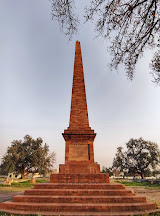175 years ago, on January 13, 1849, the Second Anglo-Sikh War unfolded at Challianwala, pitting the British East India Company against the Sikh Khalsa forces. This clash was fueled by escalating tensions, primarily linked to the conquest of Punjab. Under the leadership of Rani Jund Kaur, the British forces, commanded by General Sir Hugh Gough, sought to resist British encroachment, aiming to defeat the Sikh army and gain control of Punjab.
The British East India Company faced defeat by the Sikh Khalsa army in the Battle of Ramnagar, prompting them to once again pursue the Sikh Khalsa forces. Led by Sher Singh Attariwala, the Sikh army entrenched itself defensively, leading to fierce fighting marked by chaos and heavy casualties on both sides. The British cavalry charges, especially General Hugh Gough's headlong strategy, encountered staunch resistance from the Sikh infantry and artillery, resulting in significant losses for the British forces.
.jpeg)
.jpeg)
In this battle, Sher Singh Attariwala's Sikh army gained the upper hand, nearly compelling the British army to retreat. The Sikh army's strategy of vacating the battlefield and occupying Lahore made the Battle of Chelianwala indecisive, with both sides suffering substantial losses. Historians refer to this battle as inconclusive, casting doubts on the efficacy of the British command's war strategy.


Following the Battle of Chillianwala, a temporary pause occurred in the Second Anglo-Sikh conflict as both sides regrouped. The war resumed in February 1849 with the Battle of Gujarat, where General Gough's British forces secured victory over the Sikh army. This triumph resulted in Punjab coming under the control of the British East India Company. Although the Battle of Chelianwala remained inconclusive, it underscored the formidable challenges faced by the British forces in their endeavors to extend control over Sikh territories in 19th-century Punjab.


Written and researched by Salman Qamar
MPhil History


.jpeg)







0 Comments
Thanks you so much for your comment. We will reply to this shortly.